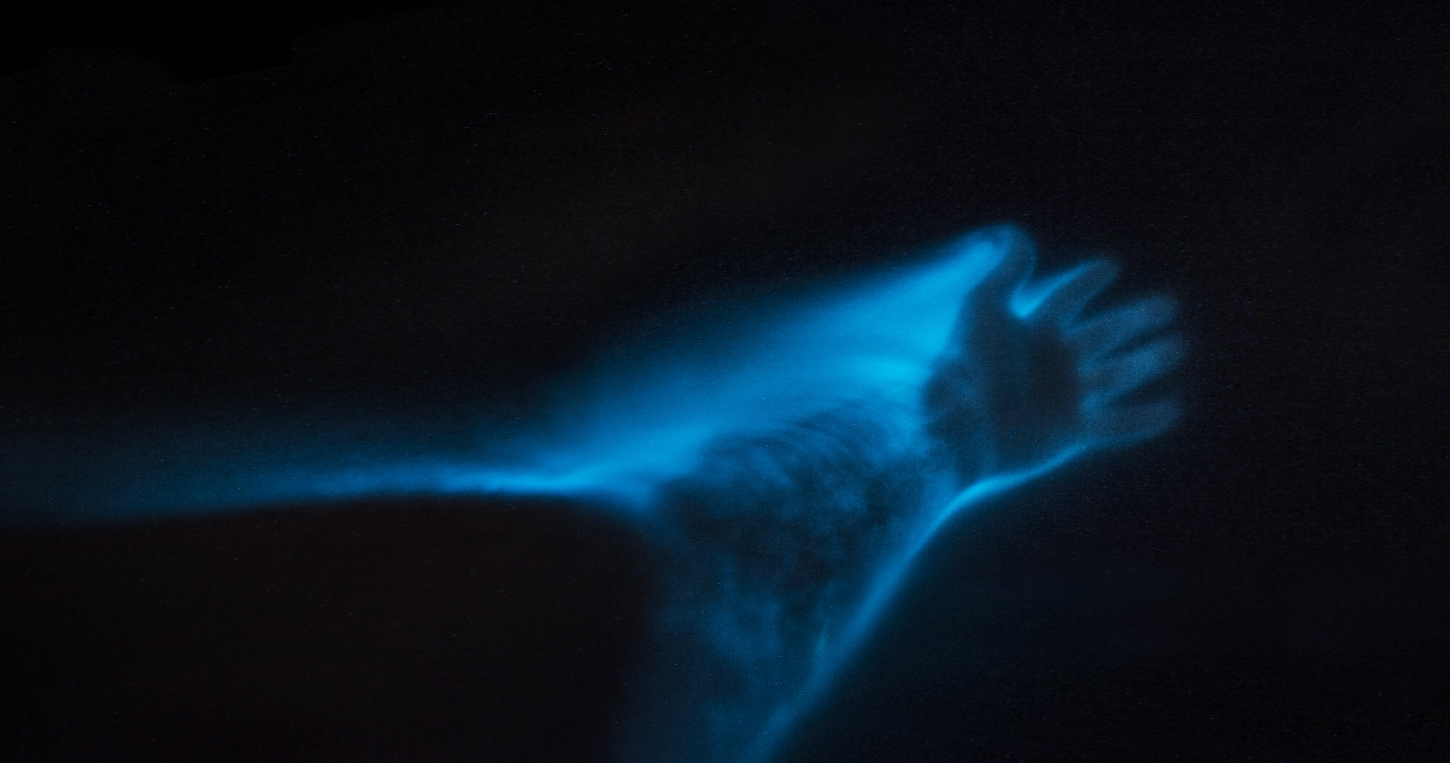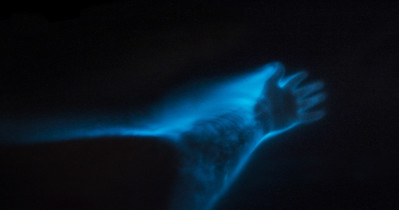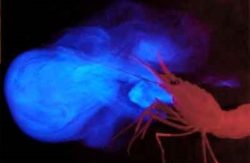
Bioluminescence in Olympic Coast National Marine Sanctuary
Written by Tessa Keeney, Communications Intern

Photo Credit: Andrew Brooks (www.andrewbrooksartist.com)
On the last night at Camp Seymour in Washington State, our counselors woke us from our beds in the darkness. We didn’t know where we were going, it was a surprise, an adventure. They led us in groups to the common area, and told us to cover one eye with our hand and listen to a story. With a hand over one eye, and the other looking at a light, the camp leader told us a tale of pirates. Is this it? But no, we lowered our hands and the darkness became clear. With unclouded vision, we made our way down to the docks. As we lined up at the edge, I bemoaned my place as last in line, but I quickly realized its advantages.
“Kneel down next to the water, but don’t touch,” our counselors said with smiles.
I couldn’t resist.
Out of sight at the edge of the dock, I placed my hand in the water and exhaled in surprise. The water touching my hand lit up with a turquoise light. I smiled and swirled my hand in the waves, watching the light dance beneath my fingertips. When one of the counselors picked up a paddle, I quickly withdrew my hand before I could get caught. Luckily, the paddle wasn’t meant for me, but a much grander purpose.
Once the paddle plunged into the water, the ripples lit up with a glow much greater than what my small hand could produce. It was beautiful, but I watched from a distance. I eagerly waited as the counselor made his way down the dock. The demonstration made its way closer… and closer… until finally! I watched, mesmerized, as the water beneath me lit up in response to the turning paddle.
Ten years later, the image is still clear in my brain. It was like a tornado of light, twisting around in the ocean.
At the time, I didn’t realize the phenomenon was bioluminescence, which occurs every year in June and July in the Olympic Coast National Marine Sanctuary and its surrounding waters. Bioluminescence occurs in marine species when a chemical reaction in an organism emits light. Many deep-sea animals produce some sort of bioluminescence. However, in some places, light can be seen on the surface of the ocean. Disturbances, such as waves, a boat, or a child with eager hands, trigger the light. Disturbing plankton in the water is the a common cause of viewable bioluminescence, and it is what I experienced as a child.

The deep-sea pandalid shrimp Heterocarpus ensifer releases light from glands located near its mouth. Photo credit: NOAA Ocean Exploration/Sönke Johnsen and Katie Thomas.
Bioluminescence is useful to many different organisms in many ways. There are many reasons why an animal may glow in the dark, such as feeding, mating, and protection. Animals may light up to lure their prey closer, or they may simply use their light to see their food better. These light shows can fool animals ranging in size from plankton to whales. Sea creatures may also use bioluminescence to attract mates. For cuttlefish, mating behavior includes the use of bioluminescence. Some organisms, like krill, use their bioluminescence to signal or communicate with their counterparts. Finally, organisms, such as the lanternfish and comb jellyfish, can use bioluminescence to scare off predators as a startle and distract method.
To experience bioluminescence yourself, visit Olympic Coast National Marine Sanctuary in the months of June or July! To truly make the most out of your experience, visit the ocean near the new moon or after the moon has set. It is best to find a dark place with little to no light pollution. Try to refrain from using a flashlight as well. Instead, let your eyes adjust to the dark. While I didn’t realize it at the time, this was the purpose of the story our camp leader told before we made our way to the ocean. Most importantly, have fun and stay safe when exploring!

Photo Credit: Brady Clarke
